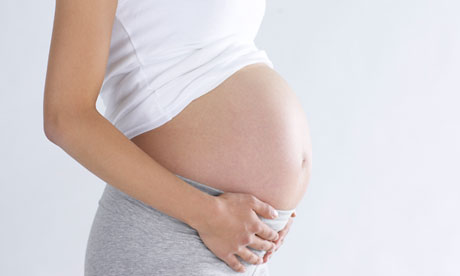
France's health authority has released an alarming report on the potentially toxic effects of a controversial industrial chemical used in food packaging on pregnant women and their unborn children.
It claims a baby's exposure to bisphenol A (BPA) in the womb could be linked to a wide range of health and behavioural problems – including breast cancer – later in life.
The report also warns that products marked "BPA-free" contain alternative substances whose long-term health effects have not been fully studied.
In its report (pdf) released publicly on Tuesday, the French National Agency for Health, Food, Environment and Work Safety (ANSES) declared that BPA has been absorbed by "the whole of western populations".
In recent years the organic compound, which is contained in a huge range of objects including tins, boxes, bottles and even dental fillings, has caused alarm as an "endocrine disruptor" because of its capacity to mimic oestrogen, and thus interfere with the hormone system in humans and animals.
"In certain situations the exposure of a pregnant woman to BPA presents a risk for the mammary gland of the unborn child," wrote ANSES. "The identified effects concern a modification of the structure of the mammary gland in the unborn child, which could increase the risk of later tumour development."
Other identified risks to the human foetus – behavioural, reproductive and weight problems – from BPA have been described as "negligible" in most, but not all circumstances. Among those at particular risk were pregnant supermarket check-out operators who were found to be particularly exposed to BPA through the thermal paper used in till receipts, resulting in an increased risk of behavioural problems, obesity and reproductive problems for their children, it said.
The threat of prostate, thyroid and male fertility problems, which have shown up in tests of BPA on animals, are not included – because of a lack of data – but "are not excluded", said ANSES.
Health risks linked to BPA have been causing increased concern for two decades, but ANSES says its research is the first to combine scientific findings with expert research on the general population and environment. It qualified its findings, however, by saying most authors of scientific papers on the subject still considered the risks moderate due to uncertainties caused by a lack of knowledge and research.
The agency, which has taken four years to produce its report, measured the levels of BPA inside homes, dust, food, water, and even supermarket till receipts. It estimates that between 20% and 25% of pregnant women are exposed to levels of BPA above those advised by the health agency. It also says the daily recommended dose of BPA considered safe by the European Food Safety Authority needs to be considerably reduced.
According to ANSES, the biggest culprit is food, which accounts for 84% of a pregnant woman's exposure to BPA, half of which comes from epoxy resins used to line food tins. Bottled waters are an added risk.
The ANSES research contradicted a major study at Edinburgh University that suggested BPA might be an innocent bystander rather than the cause of health problems, which could be attributed to unhealthy eating and lifestyle.
The French health agency also studied 73 chemical alternatives used in BPA-free products or undergoing research as a replacement and declared that most had not undergone enough research to establish if they might have a toxic effect "particularly on reproduction and/or their character as endocrine disturbers". It also looked at others bisphenols including M, S, B, AP, AF, F and BPS diglycidyl ether.
"The analysis of the available data shows that there is a common chemical structure of bisphenols that gives them oestrogenic properties, enabling them to mimic feminine hormones," it concluded.

